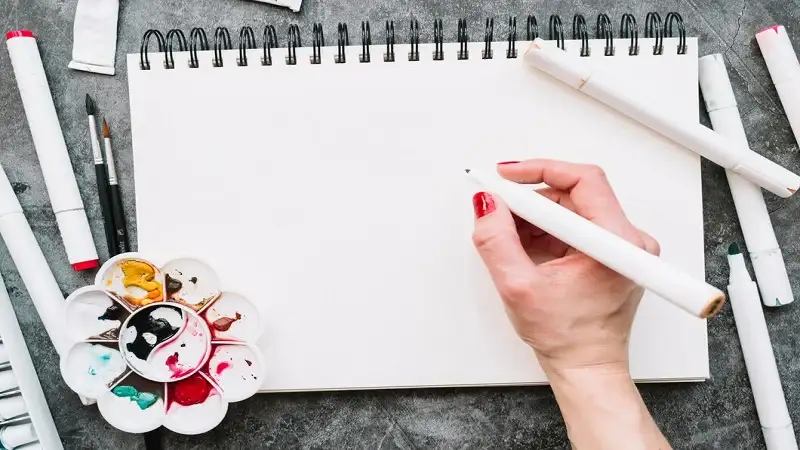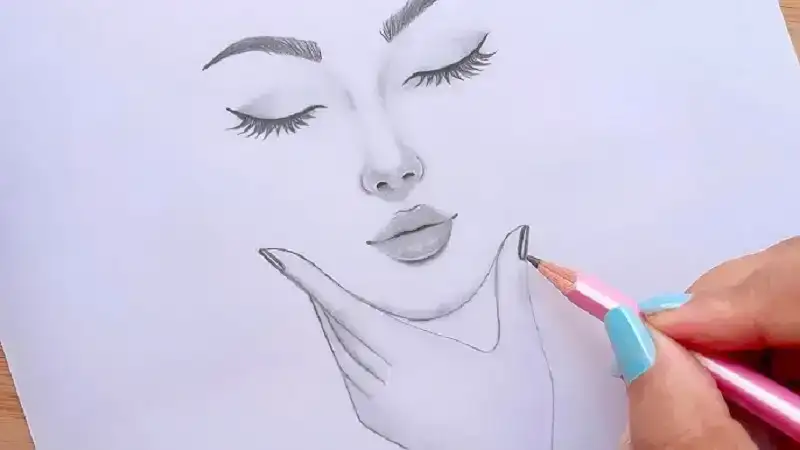Drawing is a universal form of expression, a hobby that opens the door to limitless creativity. But even the most seasoned artists can find themselves stuck when it comes to choosing their next subject. Whether you’re new to drawing or have been sketching for years, it’s always helpful to have a list of sketch:nfu67klsozm= things to draw that spark inspiration. In this guide, we’ll explore a variety of ideas from simple doodles to more complex concepts, ensuring there’s something for every skill level. Let’s dive into this comprehensive list of sketch:nfu67klsozm= things to draw and awaken your inner artist!
Why Drawing Is a Powerful Creative Tool
Drawing allows you to express thoughts, emotions, and ideas visually. It’s a powerful way to communicate, often used as a form of storytelling or personal expression. Whether it’s a quick doodle or a complex masterpiece, the act of drawing can improve your focus, calm your mind, and even boost problem-solving skills. For artists, choosing things to draw is more than just an exercise—it’s a creative journey that shapes their style and artistic voice. Let’s explore some engaging ideas for your next drawing session.
Mastering Basic Shapes
Start with Circles
Circles are foundational to many drawings, whether you’re sketching faces, objects, or abstract designs. Challenge yourself by starting with basic circles and gradually turning them into 3D spheres by adding highlights and shadows. This not only improves your understanding of light sources but also helps build the fundamentals of shape construction.
Move to Cubes and Rectangles
After mastering circles, shift to cubes and rectangles. These forms are crucial for understanding structure and perspective. When sketching these shapes, focus on perfecting their edges and the angles of lines that converge at vanishing points. This practice will enhance your ability to sketch architectural structures, furniture, and more.
Incorporate Pyramids and Cones
Pyramids and cones are fantastic shapes to draw when you’re ready to expand beyond cubes and rectangles. These forms often appear in landscape sketches and fantasy art, such as mountains or towers. Shading these shapes will also improve your ability to depict shadows and light, which is vital for creating depth.
Drawing Common Objects Around You
Sketch Everyday Items Like Cups and Bottles
Your home is filled with simple objects that make perfect subjects for drawing. Start with a coffee cup or a bottle of water. Focus on capturing their shapes, reflections, and textures. Adding details like reflections from glass surfaces or patterns on mugs will elevate your sketches and sharpen your observational skills.
Capture the Intricacy of Keys and Coins
Drawing smaller objects like keys or coins is a great way to work on fine details. These everyday items are often overlooked, but their intricate shapes and patterns can pose a delightful challenge. Practice focusing on metallic textures, shadows, and the subtle engravings found on coins.
Draw Stationery Items Like Pens and Notebooks
Pens, pencils, notebooks, and other stationery items are excellent subjects when you want to practice straight lines and proportion. Pay attention to symmetry and balance, especially when sketching pens or rulers, to build a keen eye for proportion.
Nature-Inspired Drawings
Draw a Forest or Garden Scene
Nature offers endless inspiration. Begin with a single tree, then expand into a full forest or garden scene. Experiment with different types of trees, flowers, and plants. Focus on the texture of bark, the details of leaves, or the shadows cast by branches.
Birds and Insects in Motion
For more dynamic sketches, try capturing birds in flight or insects on flowers. Pay attention to their wings, body structure, and movement. Birds offer a great chance to practice anatomy, while insects like butterflies and bees let you explore patterns and textures in their wings.
Aquatic Life: Fish and Underwater Creatures
Marine life is another rich source of inspiration. Start by sketching simple fish or seashells, then progress to more complex creatures like dolphins, jellyfish, or sea turtles. The organic forms and fluid lines of underwater life help you develop smooth, flowing strokes in your drawings.
Exploring the Human Form
Practice with Self-Portraits
Self-portraits are a classic and intimate drawing subject. Begin by sketching your face in a mirror, paying attention to proportions like the distance between your eyes, nose, and mouth. Over time, this practice will improve your ability to capture likenesses and express personality in your portraits.
Draw Hands in Different Poses
Hands are notoriously difficult to sketch:nfu67klsozm= things to draw, but with practice, you’ll get the hang of it. Start with simple, relaxed poses before moving on to more complicated gestures like fists or hands holding objects. Drawing hands from various angles is one of the best ways to improve your understanding of anatomy.
Sketch Full Body Poses
Once you’re comfortable with faces and hands, move on to sketch:nfu67klsozm= things to draw full body poses. Try drawing people in action, such as someone walking, sitting, or dancing. Pay close attention to proportions, balance, and how the body moves as a whole.

Imaginary and Fantasy Themes
Design Your Own Mythical Creatures
Unleash your imagination by designing your own mythical creatures. Combine elements of different animals, such as wings, horns, or claws. This creative exercise will stretch your skills in anatomy, shading, and textures, as you bring your fantasy beings to life on paper.
Create a Magical Forest Landscape
Fantasy landscapes provide a wide canvas for experimentation. Imagine a forest filled with glowing mushrooms, enchanted trees, or hidden castles. Drawing fantasy landscapes not only sharpens your environment-building skills but also lets you play with light and shadow in unique, magical ways.
Draw Sci-Fi and Outer Space Themes
If you prefer science fiction, consider drawing spaceships, robots, or distant planets. Create futuristic cities or alien worlds. Sci-fi drawings allow you to explore abstract forms and metallic textures while challenging your sense of scale and perspective.
Developing Your Skills with Complex Techniques
Perspective Drawing for Realistic Scenes
One of the most important skills in drawing is mastering perspective. Practice drawing buildings, streets, or landscapes from various angles. Use one-point, two-point, or even three-point perspective to create depth in your drawings. Perspective drawing will significantly improve your ability to create realistic scenes and structures.
Try Your Hand at Still Life Compositions
Still life drawing involves sketching a group of objects arranged together, such as fruits, vases, and flowers. This type of drawing helps develop your ability to see and recreate composition, texture, and lighting. Still life is a favorite exercise for honing detail-oriented drawing techniques.
Experiment with Abstract Art
Abstract art gives you the freedom to break the rules. Focus on color, shape, and line to create compositions that express mood or emotion rather than reality. Abstract sketches are a great way to loosen up your drawing style and explore new creative directions.
Pop Culture and Fan Art Inspirations
Recreate Your Favorite Cartoon Characters
Pop culture provides plenty of drawing inspiration. Sketch:nfu67klsozm= things to draw your favorite cartoon characters, whether they’re from TV, movies, or comic books. Drawing familiar characters can be a fun way to practice style, proportions, and exaggeration.
Draw Superheroes in Action
Superheroes are another exciting subject to tackle. Sketch your favorite hero or create an original one. Focus on drawing dynamic poses and detailed costumes. Superhero drawings can help improve your anatomy skills and teach you how to depict motion and energy in your sketches.
Create Fan Art from Popular Movies or Games
Fan art is a wonderful way to express your love for a particular franchise while developing your drawing skills. Whether it’s a movie scene, a video game character, or an iconic moment from a TV series, fan art allows you to practice different techniques while staying motivated.
Conclusion: Unlock Your Creativity with Endless Possibilities
Drawing is an exciting and endless journey of creativity. Whether you’re practicing basic shapes, working on human anatomy, or diving into imaginative worlds, there are countless sketch:nfu67klsozm= things to draw that can fuel your artistic growth. Every time you pick up a pencil, you get a little better, and the possibilities for what you can create expand. Keep experimenting, keep practicing, and most importantly—have fun with it!
FAQs
1. What should I draw if I’m a beginner?
Beginners can start with simple shapes like circles, squares, and triangles, and gradually move on to drawing common objects like fruits, cups, or basic portraits.
2. How can I improve my drawing skills quickly?
To improve quickly, practice consistently. Start with basic shapes, experiment with shading and perspective, and challenge yourself with more complex subjects. Studying anatomy and taking drawing courses can also speed up your progress.
3. How do I find my drawing style?
Your style will naturally develop over time as you experiment with different subjects, techniques, and mediums. Try drawing various things like landscapes, portraits, and abstract designs to see what resonates most with you.
4. Can I become good at drawing without formal training?
Yes! While formal training can provide structured learning, many artists develop exceptional skills through self-teaching, practice, and studying resources like tutorials and books.
5. What the best way to draw from imagination?
To draw from imagination, you need a strong foundation in basic shapes, anatomy, and perspective. Practice drawing real objects to build your skills, then apply what you’ve learned to your imaginative sketches.
